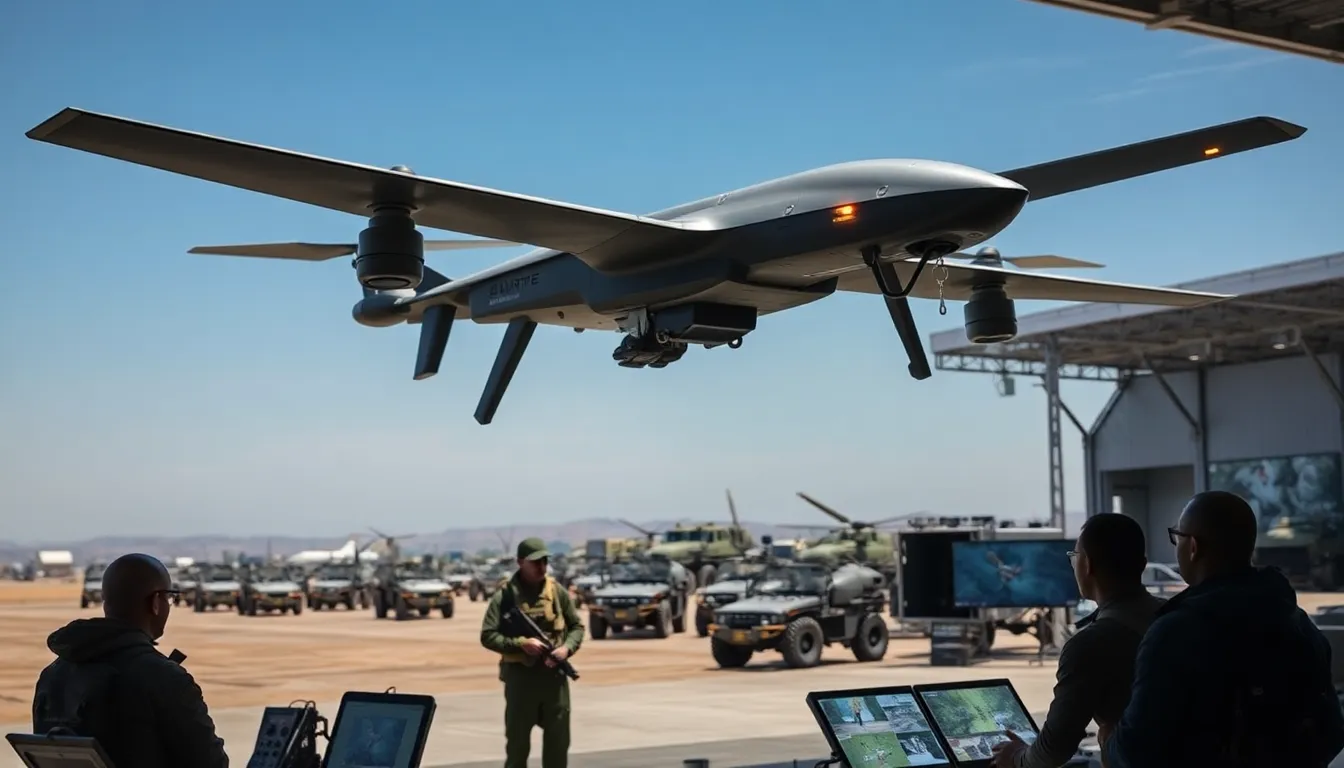In an era where technology shapes the battlefield, the combination of murder drones and Uzi firearms is a topic that raises eyebrows and discussions alike. Imagine a small, remote-controlled aircraft with precision targeting capabilities teamed with the classic versatility of an Uzi. It sparks curiosity, fear, and endless debate. Are these innovations a step towards more efficient combat, or do they raise too many ethical dilemmas? Grab a coffee, and let’s dive deep into this world where high-tech meets classic firepower.
Table of Contents
ToggleUnderstanding Murder Drones

Origin and Development
Murder drones. The name alone conjures images of futuristic warfare. The journey of these unmanned aerial vehicles (UAVs) began decades ago with military experimentation and integration in various armed forces. Initially developed for reconnaissance and surveillance, advances in AI and robotics have transformed them into instruments of precision strikes. They emerged as game changers, allowing militaries to engage targets with minimal risk to personnel.
Key Features and Capabilities
Equipped with state-of-the-art technology, murder drones boast features such as real-time surveillance, precision targeting, and the ability to carry multiple payloads. With capabilities like autonomous flight and advanced targeting systems, they enhance operational efficiency significantly. Add artificial intelligence into the mix, and these drones can even make targeting decisions without human intervention, marking a revolutionary shift in combat tactics.
Role in Modern Warfare
Advantages and Limitations
The advent of murder drones has introduced both advantages and limitations in modern warfare. One of the primary benefits is the ability to engage enemies while keeping operators safely away from the battlefield. This technological advancement reduces the risks faced by troops. Besides, their operational costs are often lower than deploying full-scale militaries for ground assaults.
But, limitations do exist. The reliance on drones can lead to intelligence failures due to technical malfunctions or misjudgments. Also, the ethical implications surrounding drone warfare cannot be ignored. As they operate in a domain previously dominated by human soldiers, concerns about accountability and collateral damage arise.
Ethical Considerations
Uzi: A Brief Overview
Before diving into the ethical considerations of murder drones, it’s essential to touch upon the Uzi. This iconic submachine gun, designed in the 1940s, has become synonymous with military and police units worldwide. Its compact size and firepower have made it a preferred choice in close-quarters combat. But, its legacy also brings ethical questions about firearm accessibility and use in civilian settings.
Historical Context
The historical context of firearms like the Uzi plays a significant role in understanding the broader implications of drone technology. The Uzi has been used across numerous conflicts and has shaped perceptions of personal and military defense. In striking contrast, murder drones represent not just a weapon but also a technological leap that challenges our traditional understanding of warfare and the moral boundaries associated with armed conflict.
Design and Functionality
Comparison of Murder Drones and Uzi
To fully grasp their impact, one must compare murder drones and Uzis not just as weapons but as symbols of their respective eras. The Uzi symbolizes direct, close-range combat, emphasizing individual combatant engagement. Murder drones, on the other hand, represent a shift towards remote warfare, where the human element is distant from the act of destruction.
Effectiveness in Combat Scenarios
In terms of effectiveness, the Uzi provides immediate, on-the-ground firepower that can respond rapidly to threats. Conversely, murder drones excel in long-range engagements with the ability to surveil and strike without risking personnel. Each plays a critical role within its operational context, showcasing how military strategies must adapt to incorporate both traditional weapons and advanced technologies.
Future Trends and Innovations
Potential Developments in Drone Technology
Looking ahead, drone technology continues to evolve at a breakneck pace. Future innovations may include enhanced AI systems that improve decision-making, swarm technology that allows drones to coordinate attacks, and more versatile payload capacities. As these trends develop, the line between warfare and automation may blur further, pushing ethical boundaries even more.
Emerging Trends in Firearms Design
The design of firearms is also undergoing significant transformations. Experts predict a rise in smart firearms, incorporating features like biometric security and connectivity to other military technologies. This convergence of arms technology and AI mirrors the changes seen in drone capabilities, indicating that the future of warfare will increasingly rely on sophisticated, interconnected systems. This leads to not just different weapons but a fundamentally different approach to combat.


